Aquatic Invertebrates
Media
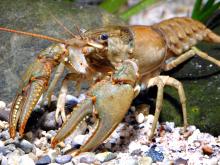
Species Types
Scientific Name
Faxonius virilis (formerly Oronectes virilis)
Description
The virile crayfish is large, reddish brown or green, and lacks prominent markings. The pincers are green with orange tips and are studded with whitish knobs. Paired dark blotches run along the abdomen. This species is widespread.
Media
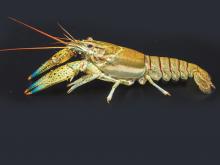
Species Types
Scientific Name
Faxonius nais (formerly Orconectes nais)
Description
The water nymph crayfish is normally found in streams but can also be found in a variety of other aquatic habitats. It is greenish brown or brown with no prominent markings. Its known distribution in Missouri is spotty.
Media
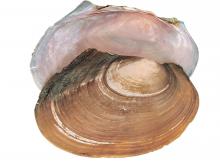
Species Types
Scientific Name
Potamilus ohiensis
Description
This species enjoys the same geographic distribution in our state as the pink heelsplitter, and it generally resembles that species, too. But as the name suggests, the pink papershell usually has a thinner shell and is smaller. Also, it prefers rather shallow water with a good current.
Media

Species Types
Scientific Name
Faxonius longidigitus (formerly Orconectes longidigitus)
Description
The longpincered crayfish is large and colorful, with very long, slender, blue-green pincers that are studded with prominent yellowish knobs. It is restricted to the White River basin in the Ozarks.
Media

Species Types
Scientific Name
Bivalve molluscs in order Unionoida
Description
Secretive and seldom seen, freshwater mussels are extraordinarily diverse in Missouri. We have nearly 70 species within our borders. Many are declining, and several are endangered.
Media
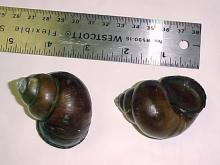
Species Types
Scientific Name
Cipangopaludina chinensis malleata (syn. Bellamya chinensis)
Description
The Chinese mysterysnail is a nonnative invasive species quickly taking over urban waters throughout the state. Never release aquarium species or aquarium water into natural aquatic habitats. Learn about and practice clean boating techniques so that you do not accidentally spread invasive aquatic species.
Media

Species Types
Scientific Name
Various species in the subclass Hirudinea
Description
Most people are repulsed by leeches. But once you get past the fact that many species are parasitic bloodsuckers, you will discover that they are fascinating creatures with an important role in nature.
Media

Species Types
Scientific Name
Freshwater species in the phylum Bryozoa
Description
Bryozoans are tiny, filter-feeding invertebrates. They create colonies that can be mossy, branching, or round and jellylike.
Media
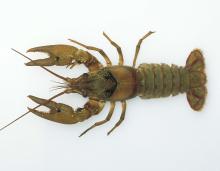
Species Types
Scientific Name
About 38 species in Missouri
Description
Crayfish are freshwater aquatic invertebrates that look a lot like small lobsters, to which they are related. There are about 38 species of crayfish in Missouri.
Media

Species Types
Scientific Name
Dugesia, Planaria, and other genera
Description
Unlike their parasitic cousins in the flatworm group, turbellarians, or planarians, are tiny carnivores or detritus-eaters that glide smoothly across submerged leaves and other objects.
See Also
About Aquatic Invertebrates in Missouri
Missouri's streams, lakes, and other aquatic habitats hold thousands of kinds of invertebrates — worms, freshwater mussels, snails, crayfish, insects, and other animals without backbones. These creatures are vital links in the aquatic food chain, and their presence and numbers tell us a lot about water quality.





















